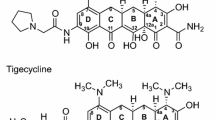Abstract
The usefulness of erythromycin is limited by its poor pharmacokinetic profile which is characterised by low blood levels and poor gastric acid stability. Erythromycin's short half-life means that a four-times daily dosage schedule is required for effective treatment. In comparison, the azalide structure of azithromycin confers a much improved pharmacokinetic profile. The bioavailability of azithromycin is approximately 37 % in humans (25 % for erythromycin). Serum concentrations decline in a polyphasic manner and the relatively short serum half-life (11–14 hours recorded 8–24 hours after last dose) is an indication of the initial rapid distribution of drug into the tissues. The low serum levels recorded 24 hours or more after the end of administration are thought to reflect the slow release of azithromycin from tissues. Tissue concentrations exceed serum concentrations by as much as 100-fold following a single 500 mg oral dose. Macrophages and polymorphonuclear leucocytes concentrate azithromycin at levels greater than those found in tissues themselves. During multiple dosing, tissue half-life increases with duration of administration and the tissue to serum ratio further increases. High concentrations of drug are found in tissues such as tonsil, lung, prostate, liver and lymph nodes with relatively low concentrations in fat and muscle. Significantly, the sustained high levels of drug in the tissues appears to correlate with good in vivo activity. Two 1.5 g regimens have been investigated in clinical trials: 500 mg on day 1, followed by 250 mg daily on days 2 to 5; or 500 mg daily for three days. These regimens are expected to maintain azithromycin levels in tissue sites of infection above the MIC for many clinically significant pathogens, and to continue to do so for several days after administration has ceased. In addition, single-dose (1 g) azithromycin has demonstrated excellent clinical efficacy in the therapy of chlamydial urethritis/cervicitis, the high and prolonged tissue levels of antibiotic enabling such a regimen to be effective.
Similar content being viewed by others
References
Retsema J, Girard A, Schelkly W, Manousos M, Anderson M, Bright G, Borovoy R, Brennan L, Mason R: Spectrum and mode of action of azithromycin (CP-62,993), a new 15-membered-ring macrolide with improved potency against gram-negative organisms. Antimicrobial Agents and Chemotherapy 1987, 31: 1939–1947.
Bright GM, Nagel AA, Bordner J, Desai KA, Dibrino JN, Nowakowska J, Vincent L, Watrous RM, Sciavolino FC: Synthesis, in-vitro and in-vivo activity of novel 9-deoxo-9a-aza-9a homoerythromycin A derivative; a new class of macrolide antibiotics, the azalides. Journal of Antibiotics 1988, 41: 1029–1047.
Fitzgeorge RB, Featherstone ASR, Baskerville A: Efficacy of azithromycin in the treatment of guinea pigs infected withLegionella pneumophila by aerosol. Journal of Antimicrobial Chemotherapy 1990, 25, Supplement A: 101–108.
Fiese EF, Steffen SH: Comparison of the acid stability of azithromycin and erythromycin. Journal of Antimicrobial Chemotherapy 1990, 25, Supplement A: 39–47.
Foulds G, Shepard RM, Johnson RB: The pharmacokinetics of azithromycin in human serum and tissues. Journal of Antimicrobial Chemotherapy 1990, 25, Supplement A: 73–82.
Gladue RP, Bright GM, Isaacson RE, Newborg MF: In vitro and in vivo uptake of azithromycin (CP-62,993) by phagocytic cells: possible mechanism of delivery and release at sites of infection. Antimicrobial Agents and Chemotherapy 1989, 33: 277–282.
de Duve C, de Barsy T, Poole B, Trouet A, Tulkens P, van Hoof F: Lysosomotropic agents. Biochemical Pharmacology 1974, 23: 2494–2531.
Dette GA: Vergleich der Gewebegängigkeit von Erythromycin (tissue penetration of erythromycin). Infection 1979, 7: 129–145.
Foulds G, Chan KH, Johnson JT, Shepard RM, Johnson RB: Concentrations of azithromycin in human tonsillar tissue. European Journal of Clinical Microbiology and Infectious Diseases 1991, 10: 853–856.
Baldwin DR, Wise R, Andrews JM, Ashby JP, Honey-bourne D: Azithromycin concentrations at the sites of pulmonary infection. European Respiratory Journal 1990, 3: 886–890.
Cooper MA, Nye K, Andrews JM, Wise R: The pharmacokinetics and inflammatory fluid penetration of orally administered azithromycin. Journal of Antimicrobial Chemotherapy 1990, 26: 533–538.
Girard AE, Girard D, English AR, Gootz TD, Cimochowski CR, Faiella JA, Haskell SL, Retsema JA: Pharmacokinetic and in-vivo studies with azithromycin (CP-62,993), a new macrolide with an extended half-life and excellent tissue distribution. Antimicrobial Agents and Chemotherapy 1987, 31: 1948–1954.
Girard AE, Girard D, Retsema JA: Correlation of the extravascular pharmacokinetics of azithromycin with in-vivo efficacy in models of localized infection. Journal of Antimicrobial Chemotherapy 1990, 25, Supplement A: 61–71.
Retsema JA, Girard AE, Girard D, Milisen WB: Relationship of high tissue concentrations of azithromycin to bactericidal activity and efficacy invivo. Journal of Antimicrobial Chemotherapy 1990, 25, Supplement A: 83–89.
Araujo FR, Guptill DR, Remington JS: Azithromycin, a macrolide antibiotic with potent activity againstToxoplasma gondii. Antimicrobial Agents and Chemotherapy 1988, 32: 755–757.
Shepard RM, Falkner FC: Pharmacokinetics of azithromycin in rats and dogs. Journal of Antimicrobial Chemotherapy 1990, 25, Supplement A: 49–60.
Goldstein FW, Emiram MF, Coutrot A, Acar JF: Bacteriostatic and bactericidal activity of azithromycin againstHaemophilus influenzae. Journal of Antimicrobial Chemotherapy 1990, 25, Supplement A: 25–28.
Maskell JP, Sefton AM, Williams JD: Comparative in-vitro activity of azithromycin against gram-positive cocci,Haemophilus influenzae and anaerobes. Journal of Antimicrobial Chemotherapy 1990, 25, Supplement A: 19–24.
Dunkin KT, Jones S, Howard AJ: The in-vitro activity of CP-62,993 againstHaemophilus influenzae, Branhamella catarrhalis, staphlococci and streptococci. Journal of Antimicrobial Chemotherapy 1988, 21: 405–411.
Steingrimsson O, Olafsson JH, Thorarinsson H, Ryan RW, Johnson RB, Tilton RC: Azithromycin in the treatment of sexually transmitted disease. Journal of Antimicrobial Chemotherapy 1990, 25, Supplement A: 109–114.
Author information
Authors and Affiliations
Rights and permissions
About this article
Cite this article
Lode, H. The pharmacokinetics of azithromycin and their clinical significance. Eur. J. Clin. Microbiol. Infect. Dis. 10, 807–812 (1991). https://doi.org/10.1007/BF01975832
Issue Date:
DOI: https://doi.org/10.1007/BF01975832




